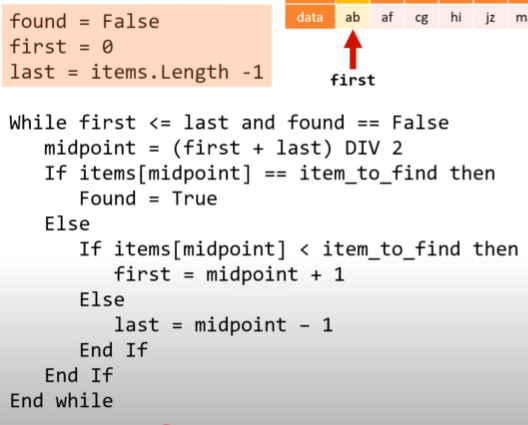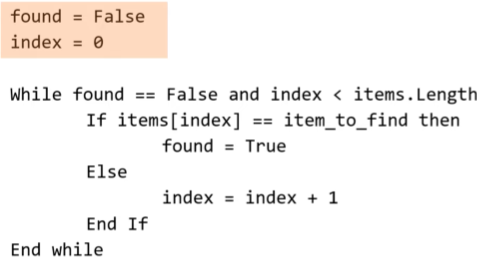2.3.4 searching algorithms
1/7
There's no tags or description
Looks like no tags are added yet.
Name | Mastery | Learn | Test | Matching | Spaced |
|---|
No study sessions yet.
8 Terms
binary search
can only be applied on sorted data
efficient for large data sets as it discards half the data after each iteration
works by finding the middle element in a list of data, comparing it to the element being searched for, before deciding which side of the data the desired element is to be found in
if list cant be divided, round to nearest whole number
the unwanted half of the data is then discarded
the process is repeated until the desired element is found or until it is known that the desired element doesn’t exist in the data
linear search
doesn’t require data to be in order
efficient for smaller data sets, inefficient for large data sets
starts at the first item in the list and checks each item one by one
when the item being searched for is found the search ends
ADV breadth first
more efficient when the data being search for is closer to the root
in general has abetter time complexity than depth first
ADV depth first
more efficient when the data being searched for is further down the tree
memory requirement is linear
can be written recursively to aid understanding
DIS
in large trees it may never return a value
binary search pseudocode

binary search python

linear search pseudocode

linear search python
